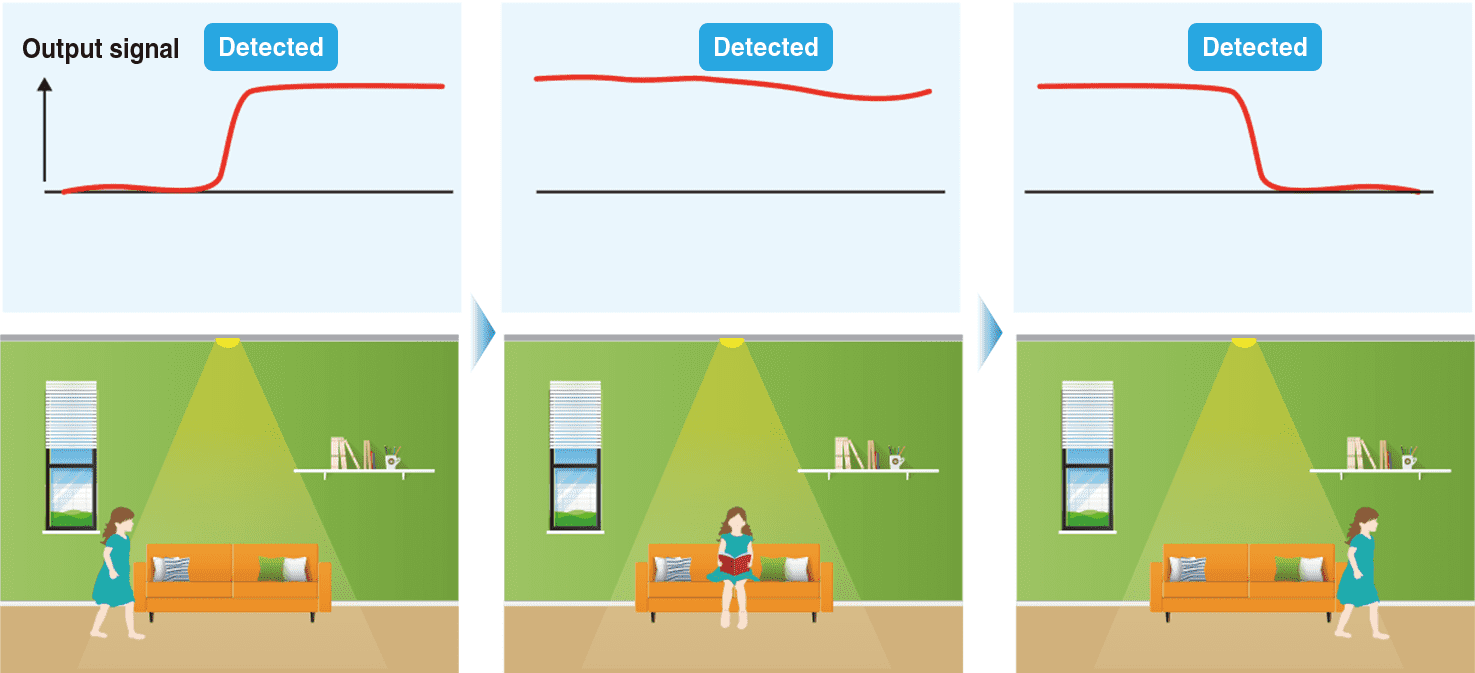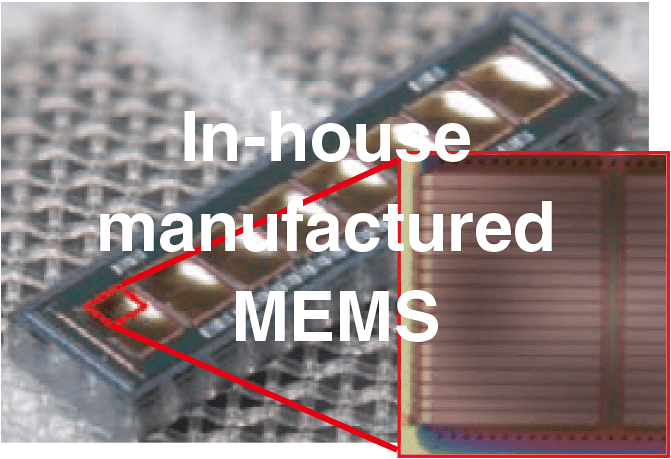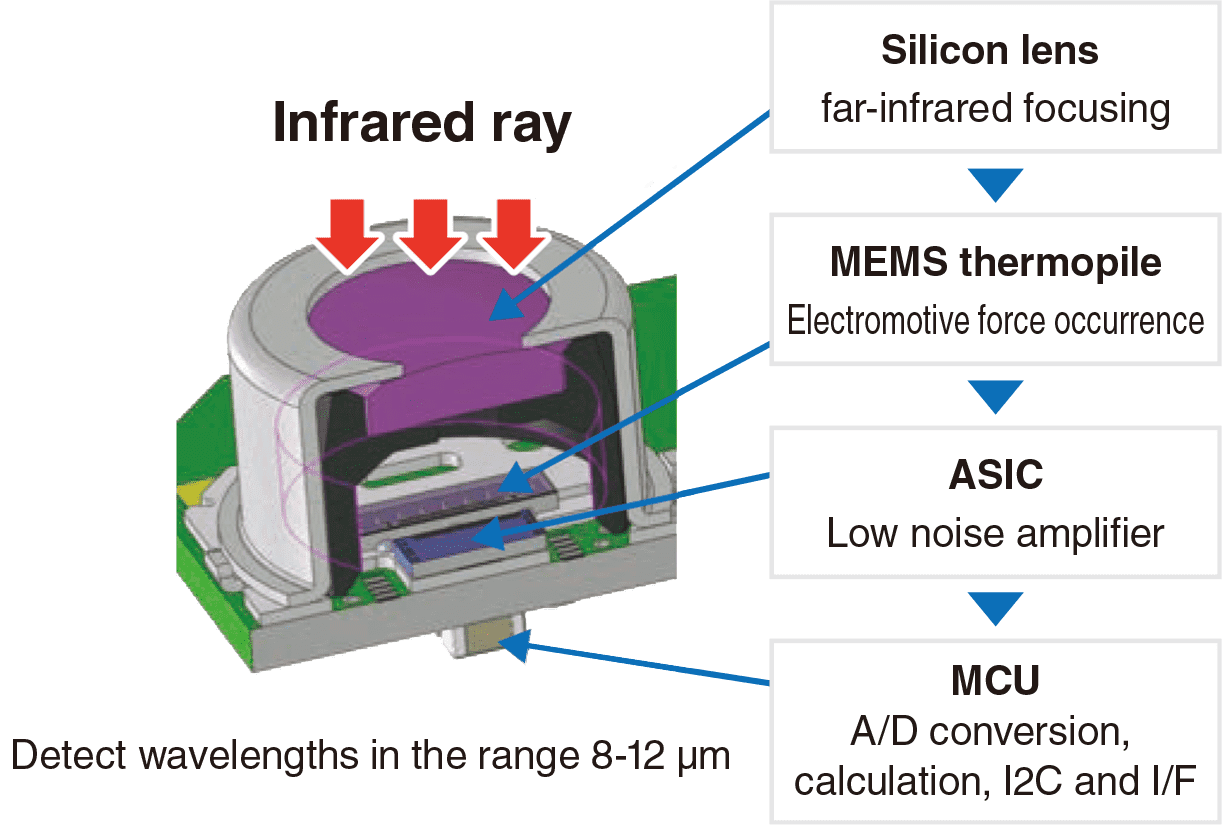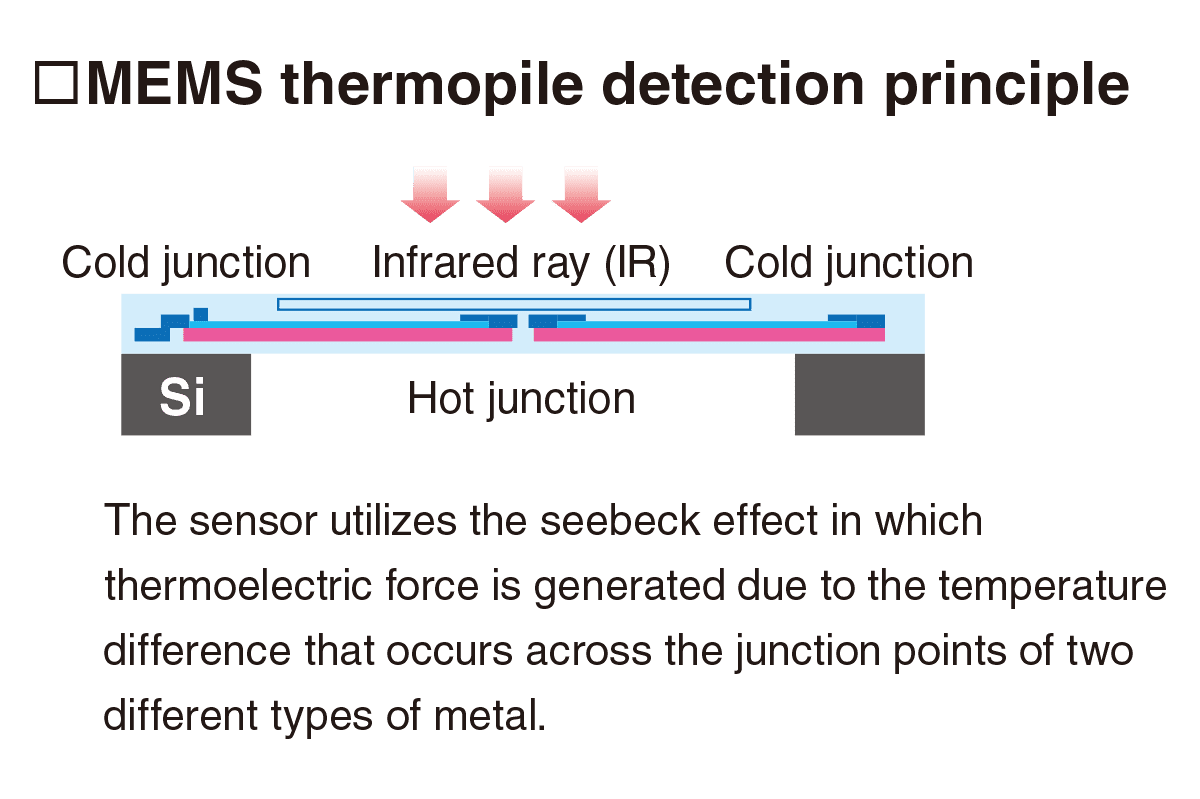D6T MEMS Thermal Sensors
Contactless Measurement OMRON MEMS Thermal Sensors are able to detect the slightest temperature changes

-
MEMS Thermal (IR sensor) measures the surface temperature of objects without touching them when the thermopile element absorbs the amount of radiant energy from the object.
- 1
-
Low noise
Market performance of over 6 million units*1 with a stable temperature output*2
*1: According to OMRON's research as of March 2022.
*2: Refer to the Noise Equivalent Temperature Difference (NETD) on page 12. - 2
-
Easy connection
Direct temperature value output allows easy software design
- 3
-
Number of elements and temperature lineup
Variation of the number of elements (1 to 1024) x temperature range (-40 to 200°C)
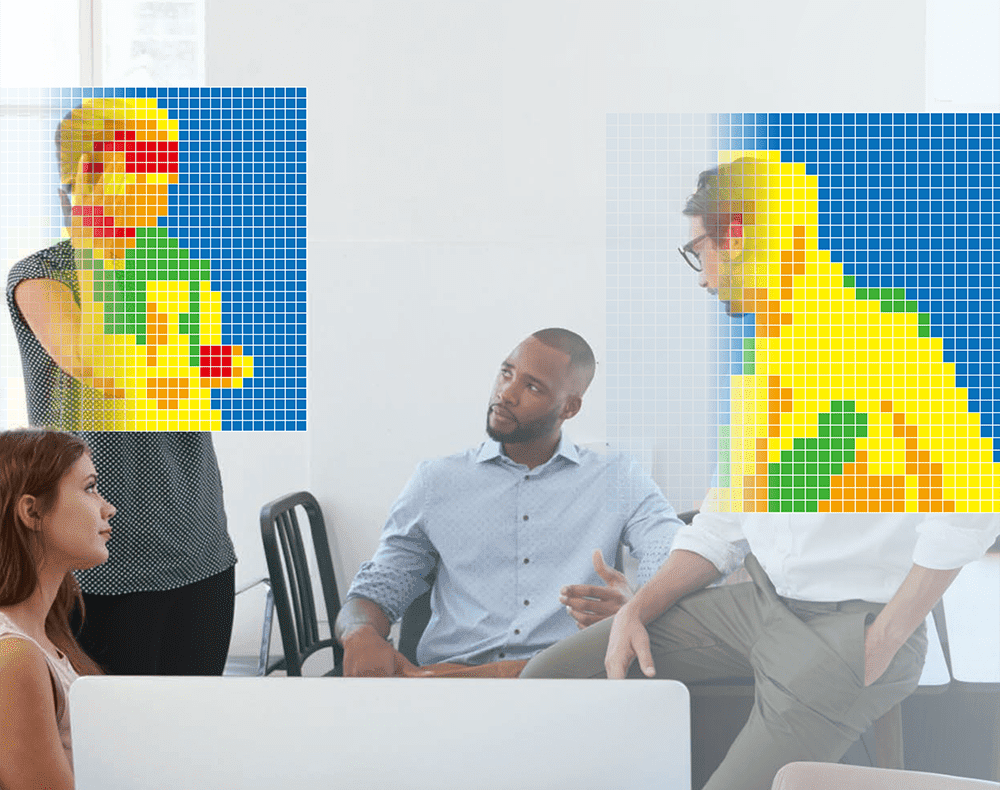
- 1
-
High Precision
Market performance of over 6 million units*1 with a stable temperature output*2
*1: According to OMRON's research as of March 2022.
*2: Refer to the Noise Equivalent Temperature Difference (NETD) on page 12.
- Output was unstable in applications requiring high precision

- Stable temperature output
-
OMRON D6T-1A-01 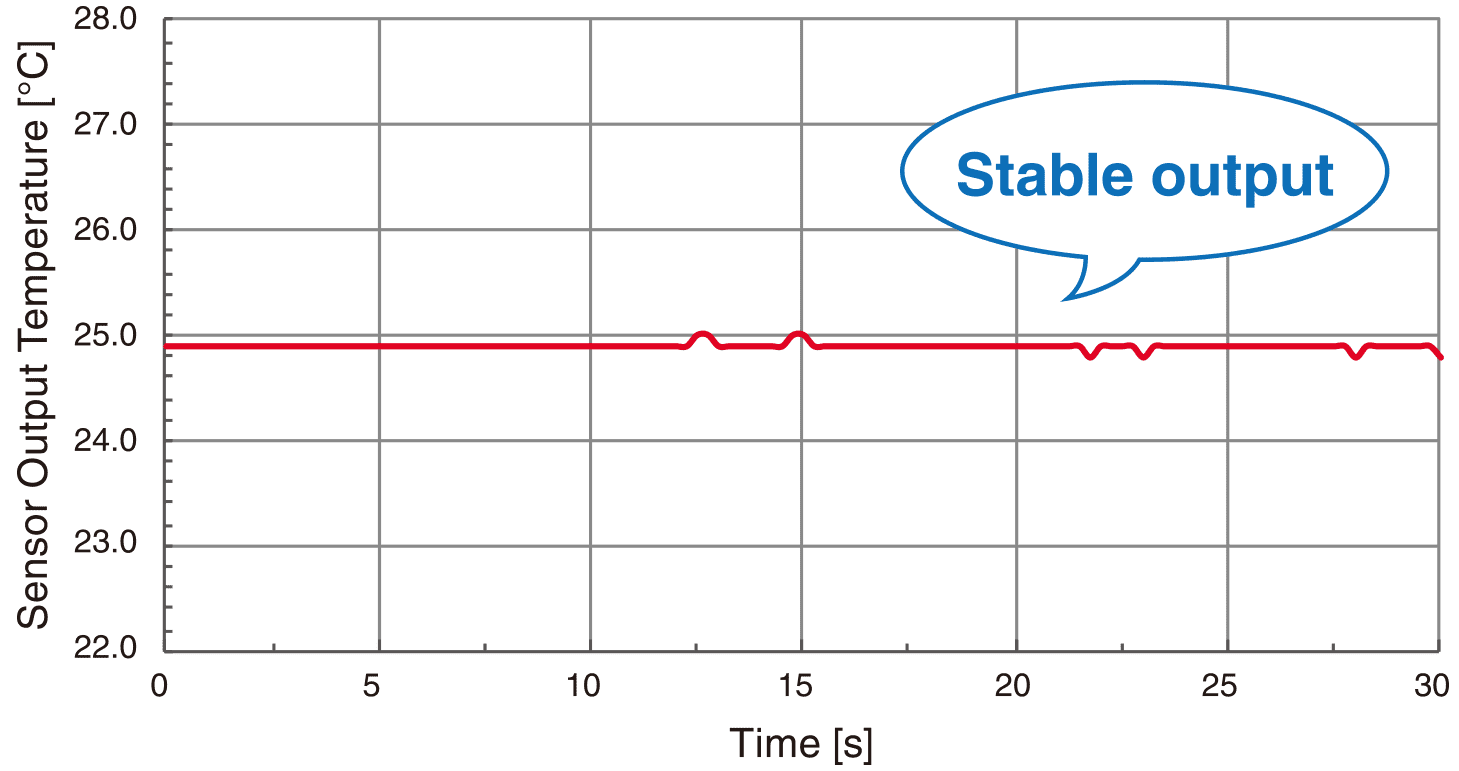
Standard Equivalent Product 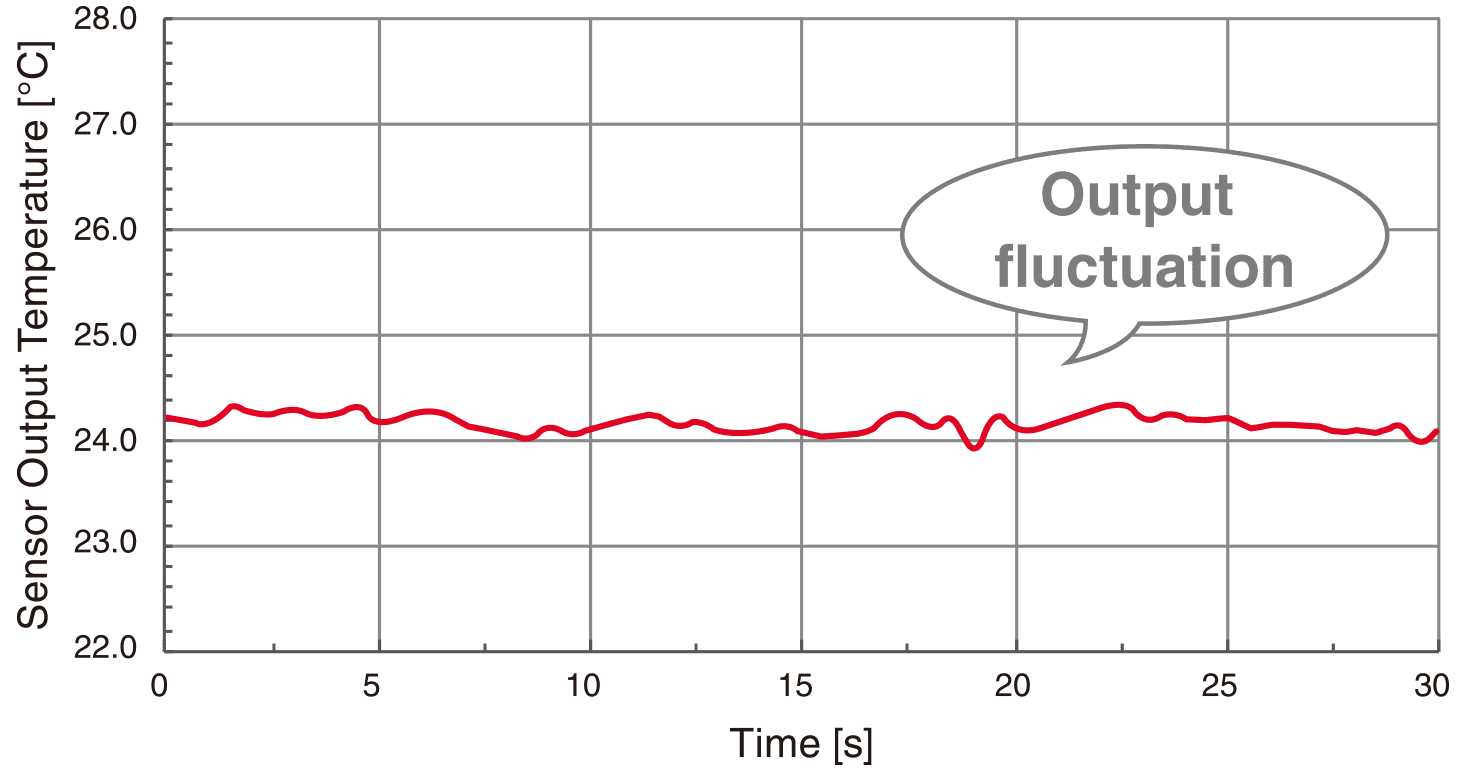
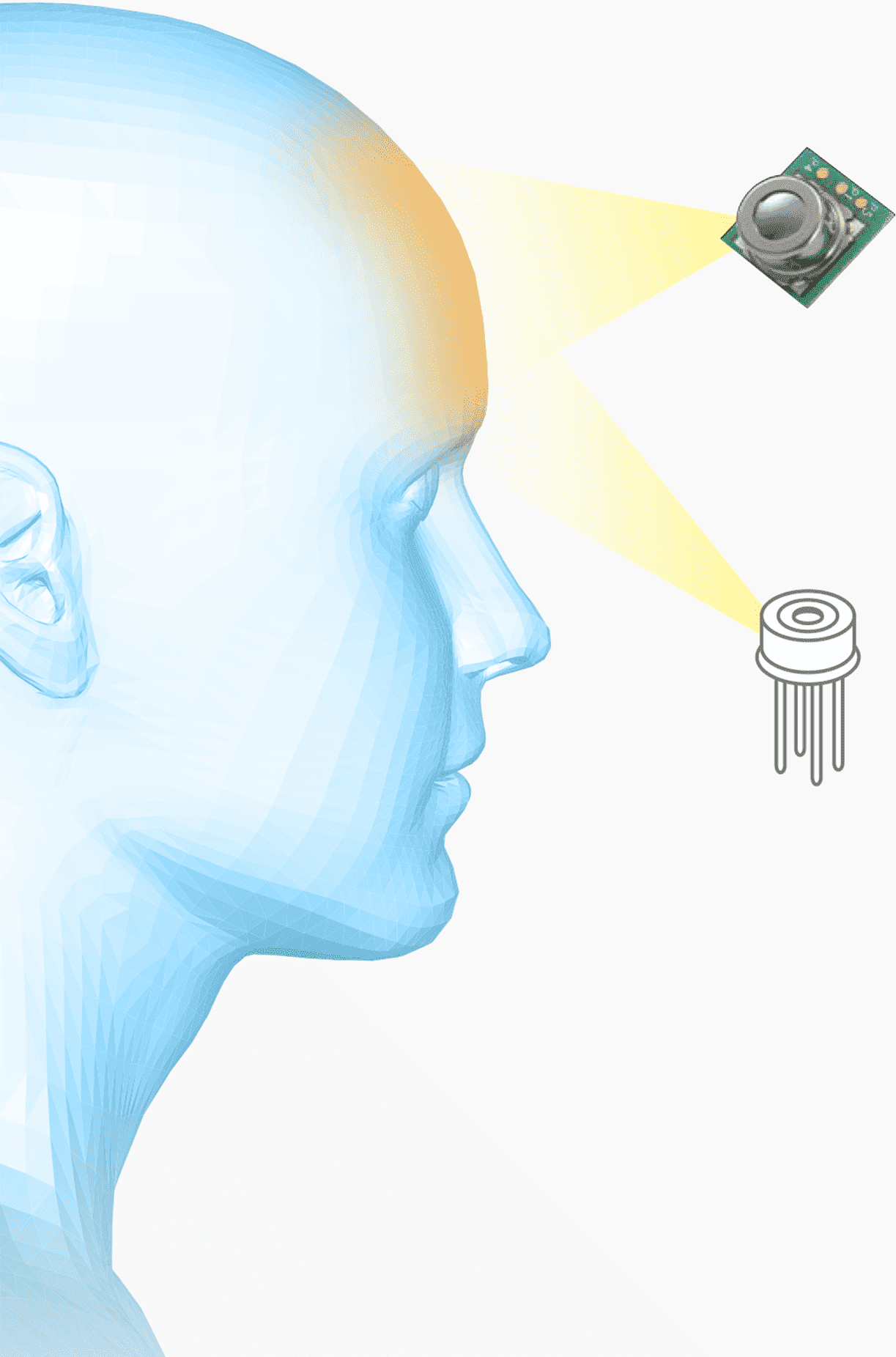
- Note 1. According to OMRON's evaluation method (30-second continuous measurement with a blackbody furnace at 25°C)
- Note 2. However, product specifications are not guaranteed.
Achieves a low NETD*1 through the combination of ASIC and MEMS
reduce the noise of ASIC, thus achieving a low NETD*1.
- *1: Refer to the Noise Equivalent Temperature Difference (NETD) on page 12 of the data sheet.
OMRON's unique MEMS technology allows combining thermopile elements and ASICs into one package, resulting in ultra-compact footprint and high precision.
- 2
-
Easy connection
Direct temperature value output allows easy software design
-
OMRON D6T Temperature value output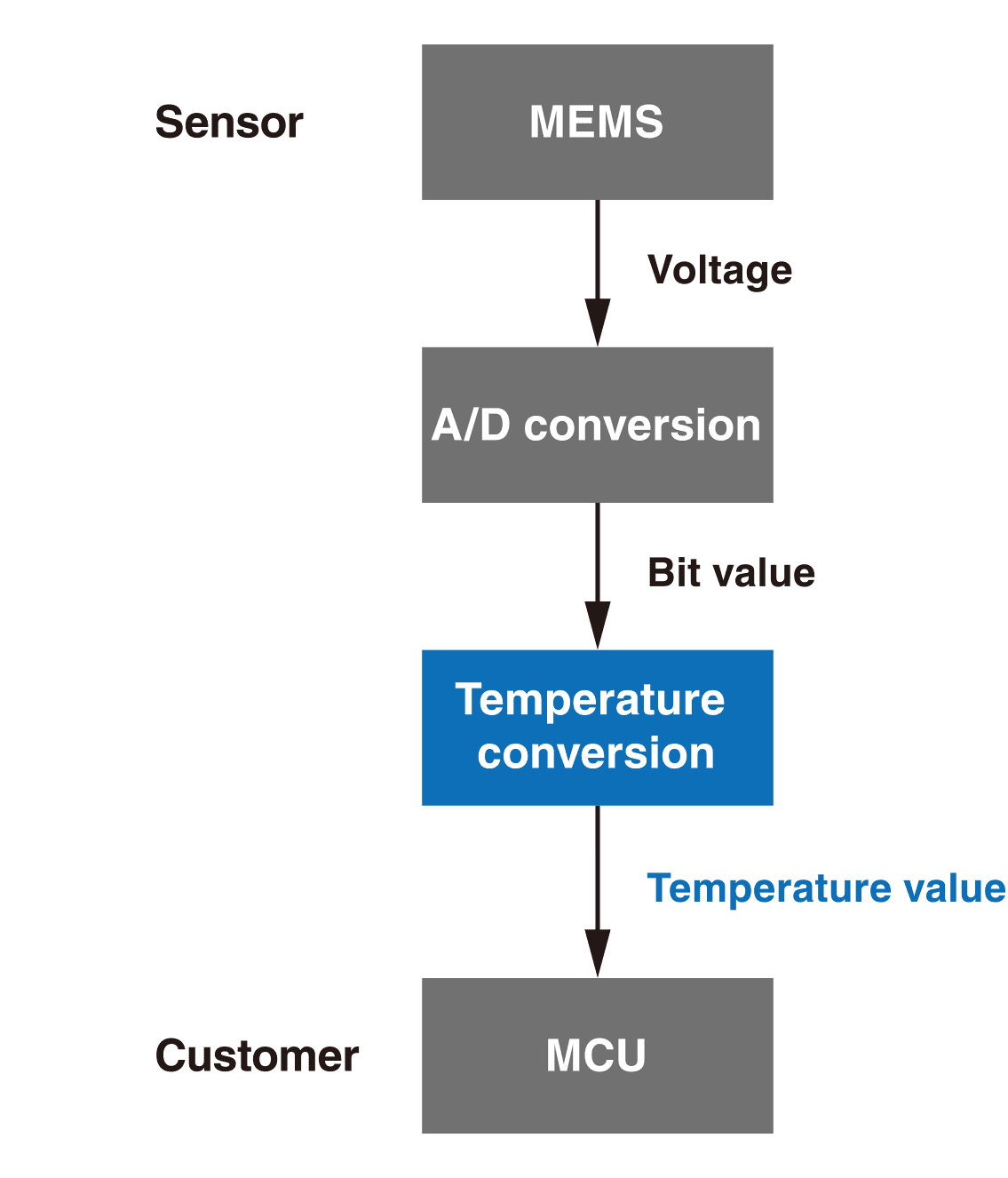
-
CAN packaged thermal sensor from a competitor Bit value output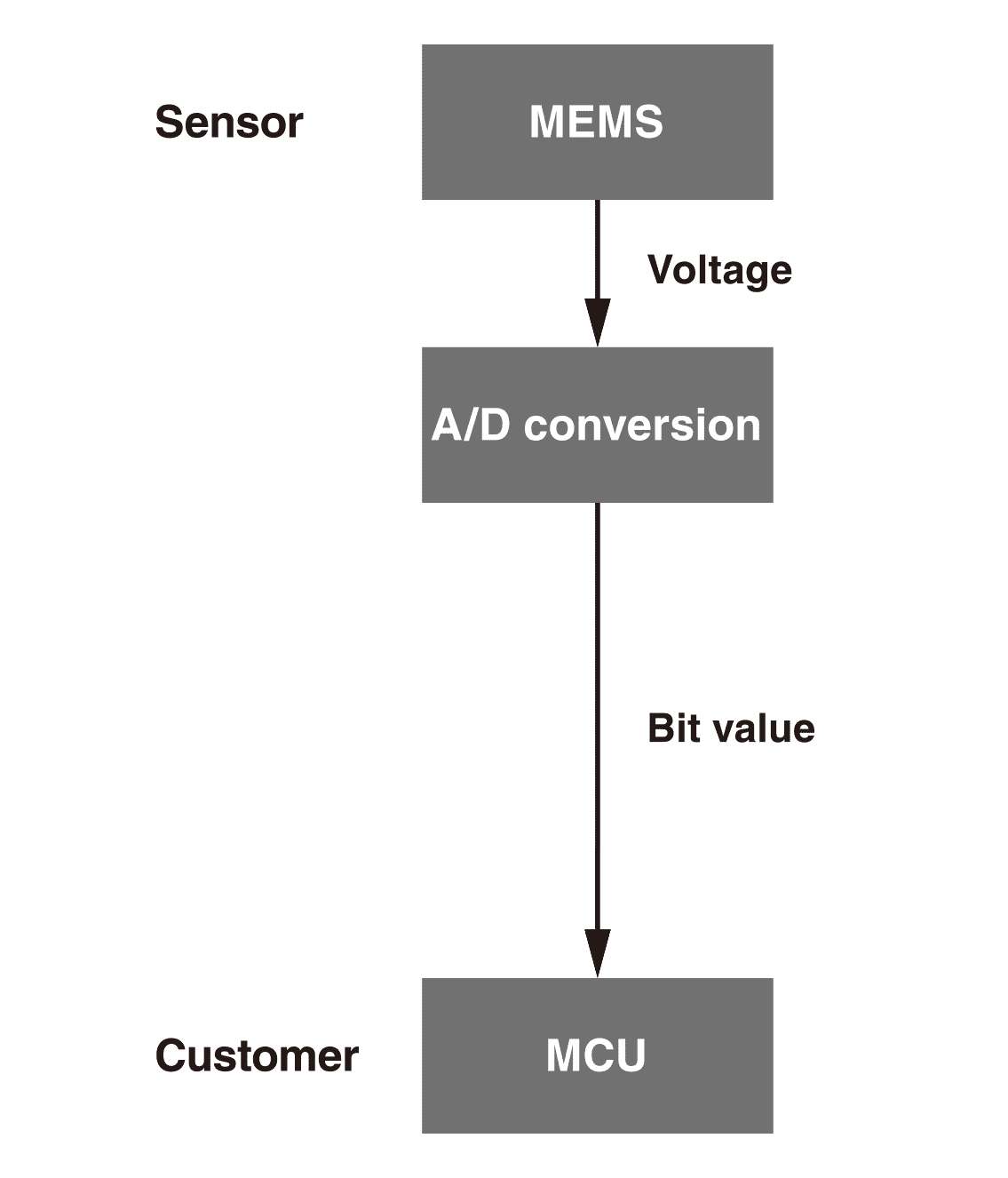
Note: 2JCIE-EV01-RP1, 2JCIE-EV01-AR1, 2JCIE-EV01-FT1, and 2JCIEHARNESS-01 is discontinued at the end of January 2025.
MEMS thermal sensors can be connected to OMRON sensor evaluation boards. The below 3 types of platform are applicable. Evaluation can be performed easily by connecting thermal sensor, evaluation board, and harness to the platform.
 Sensor Sensor |
 Harness for Connection Harness for Connection |
 Evaluation Board Evaluation Board |
Platform | Sample Code |
|---|---|---|---|---|
| D6T | 2JCIE-HARNESS-01 | 2JCIE-EV01-RP1 | Raspberry Pi*1 | https://github.com/omron-devhub/d6t-2jcieev01-raspberrypi |
| 2JCIE-EV01-AR1 | Arduino*2 | https://github.com/omron-devhub/d6t-2jcieev01-arduino | ||
| 2JCIE-EV01-FT1 | ESP32 Feather*3 | https://github.com/omron-devhub/d6t-2jcieev01-arduino |
- *1. Raspberry Pi is a registered trademark of the Raspberry Pi Foundation.
- *2. Arduino is a registered trademark of Arduino LLC and Arduino SRL.
- *3. Feather is a registered trademark of Adafruit Industries LLC.
- 3
-
Number of elements and temperature lineup
Variation of the number of elements (1 to 1024) and the temperature range (-40 to 200°C)

Example Applications
The sensors can be used in a wide range of applications, depending on the temperature measurement range.- Refrigerator Interior &
Room Temperature DetectionAble to detect temperature
from a long distance - Human Presence
DetectionAble to detect stationary
human presence - Screening of Humans
with FeverContributes to automated
non-contact temperature
detection - Abnormal High Temperature
MonitoringContributes to prevention
of fires due to overheating
- Home appliances
(refrigerators & air conditioners) - Air conditioners &
lighting systems - Room-Entry Management
Equipment - Transformers &
distribution boards
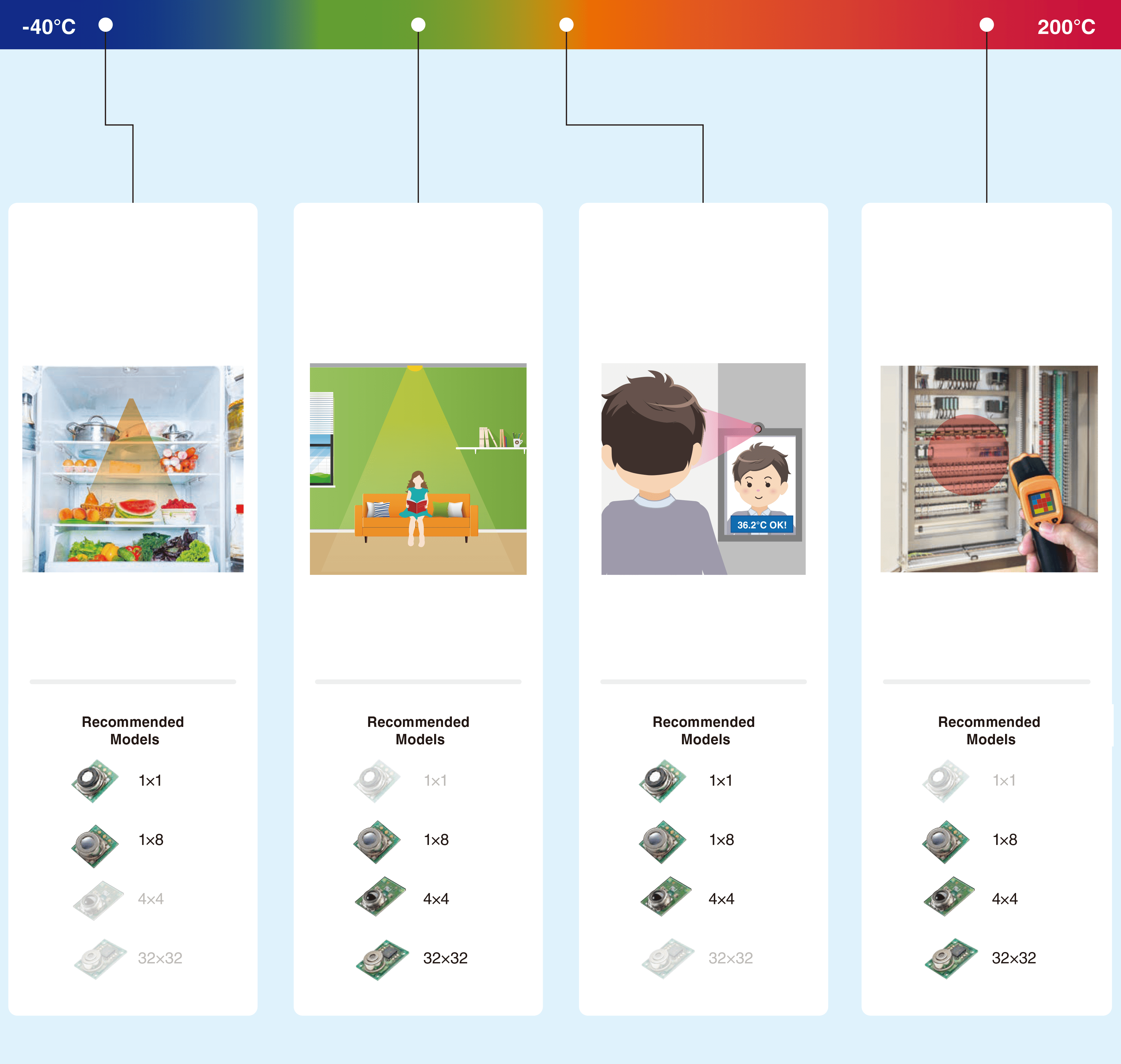

Comparison with Pyroelectric Sensor
Both the pyroelectric sensor and non-contact MEMS thermal sensor can detect even the slightest amount of radiant energy from objects such as infrared radiation and convert them into temperature readings. However, unlike pyroelectric sensor that relies on motion detection, non-contact MEMS thermal sensor is able to detect the presence of stationary humans (or objects).
- Pyroelectric sensor
- Converts temperature readings only when detecting “temperature changes in the radiant energy” in its field of view.
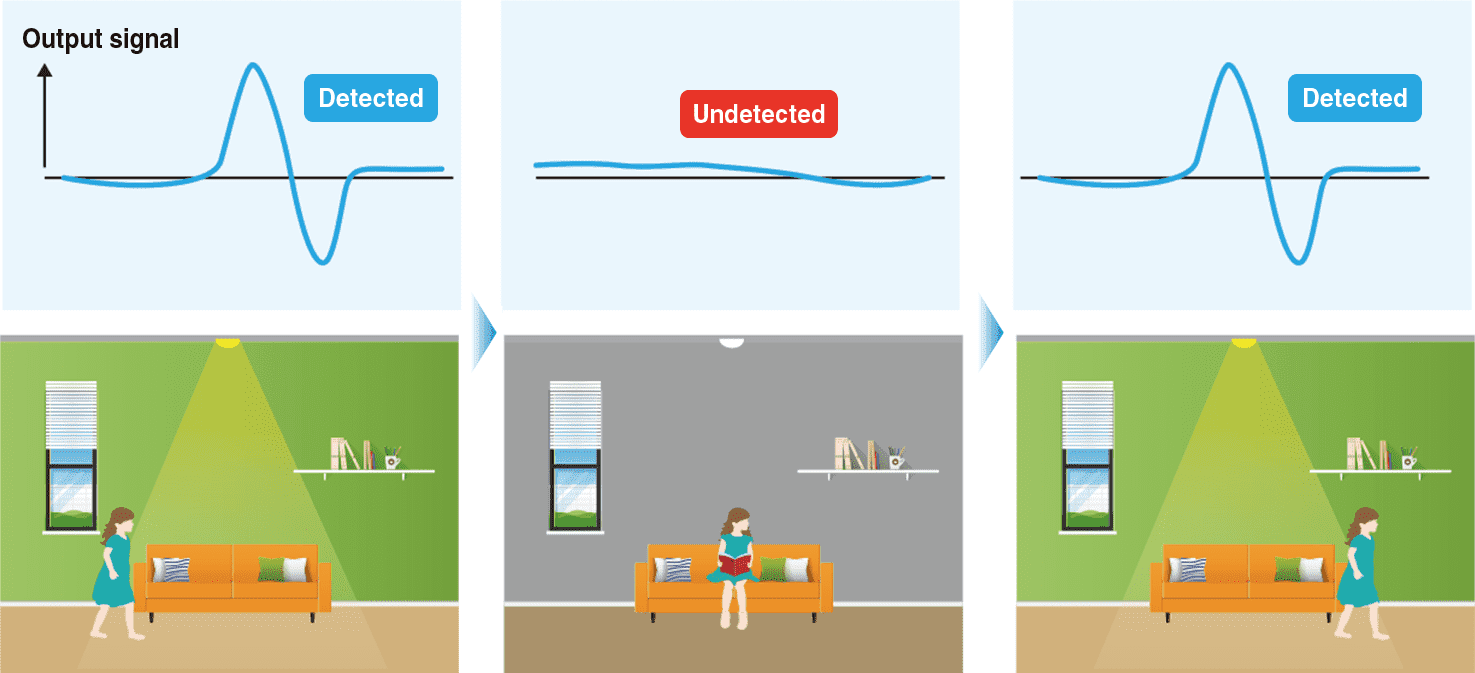
- MEMS thermal sensor (thermopile)
- Converts temperature readings by “continuously detecting the temperature of radiant energy” in its field of view
